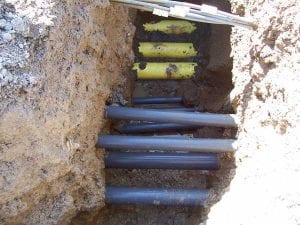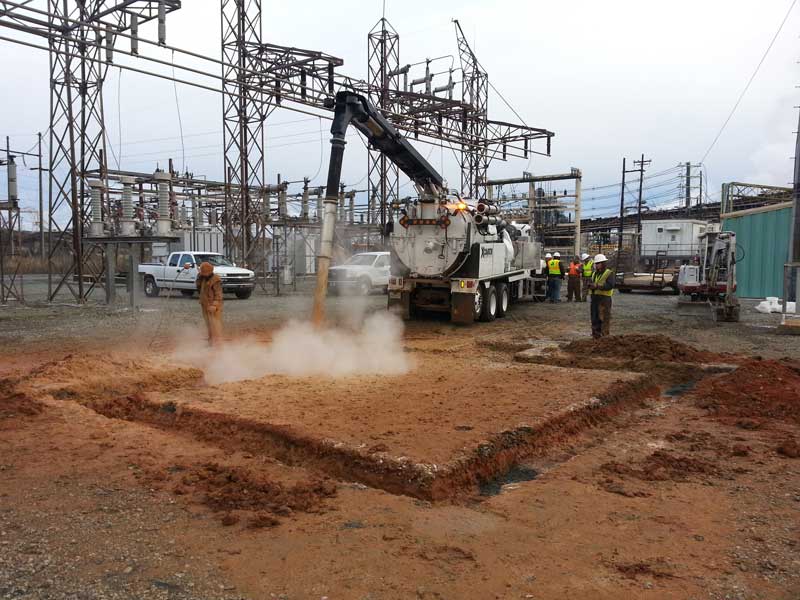Safety of Hydrovacs for Construction Excavation
Vacuum excavation via hydrovac machines is a method of trenching that involves using high-pressure water to loosen the soil and taking out the soil from the site with a high-suction vacuum simultaneously. This trenching method is adopted on lots of construction and infrastructure projects. The method has been accepted as a more eco-friendly and safer trenching technique than the others. Nevertheless, vacuum excavation, just like any other construction activity comes with its own health and safety risks.
Therefore, construction personnel need to plan well and establish proper guidelines that define potential hydrovac excavation risks and how to avoid them. This will minimize the risk of work-related accidents and fatalities. Vacuum excavation via hydrovacs can pose risks such as:
- Overhead wires being too close to the boom
- High pressure water damage or injury
- Damaged or exposed electrical wires exposed to water
Construction teams can minimize these risks by identifying them and making proper safety rules. Here are some safety precautions for a construction excavation site:
Discover Underground Utilities
 Striking or damaging underground utilities is a possible risk associated with hydro-excavation. Although damaged underground utilities such as cables may not directly affect the construction team, it affects the areas where the utilities are used.
Striking or damaging underground utilities is a possible risk associated with hydro-excavation. Although damaged underground utilities such as cables may not directly affect the construction team, it affects the areas where the utilities are used.
Nevertheless, some underground utilities like natural gas lines and electricity cables can pose dangerous health and safety hazards to construction personnel. These hazards may be in form of electrocution, explosion, and fire outbreaks. Damaged utilities can cause severe injury and death at the construction site. Identifying these underground utilities at vacuum excavation sites before work can help to prevent hazards.
Only Trained Personnel Should Engage In Hydrovac Excavation
Trained personnel understand safe practices and standards which prevents hazard. The construction team should be well trained on how to use the equipment. Minimum hydrovac operation training requirements include first aid, fall protection, equipment training, traffic protection, and confined space training.
Place Relevant Signs on Hydrovac Site
These safety precautions are crucial to alert personnel about dangers and risks on the site. It also helps to create a safe working environment that protects workers against accidents.
Create a Safety Plan
A safety plan should identify potential risks and how to manage them. An emergency plan can help to prepare for emergencies and provide guidelines on what to do.
Use Equipment Correctly
Use the hydrovac equipment specifically designed for vacuum excavation. Ensure that the equipment is high quality and in good working condition. Personnel should read manuals before operating any equipment. It is best to consult the supplier when unsure to avoid damaging the equipment.
Wear Personal Protective Equipment (PPE)
Workers should always be on their PPE. PPE includes safety goggles, gloves, hats, protective clothing, respiratory protection, footwear, and hearing protection. This equipment can protect workers from injury and help to minimize the degree of damage during accidents.
Be Cautious of Overhead Lines
Vacuum excavation via hydrovac machines deals with the ground surface, but it’s also important to adhere to safety precautions when there are overhead wires. Workers should be distant, and equipment should be monitored when operated.
Endnote
Vacuum excavations via hydrovac machines is one of the safest methods of trenching. However, without proper safety precautions, on-site personnel and the public would be at risk. Strict adherence to safety procedures can help to avoid the hazards that come with excavations.
Vac-Con offers a comprehensive family of hydrovac equipment – from skids and trailers to small, mid-sized, and large trucks. All of our machines are designed and built by our employee-owners, ensuring quality and durability in each unit.
Categorised in: Hydro Excavation
This post was written by Vac-Con


Comments are closed here.